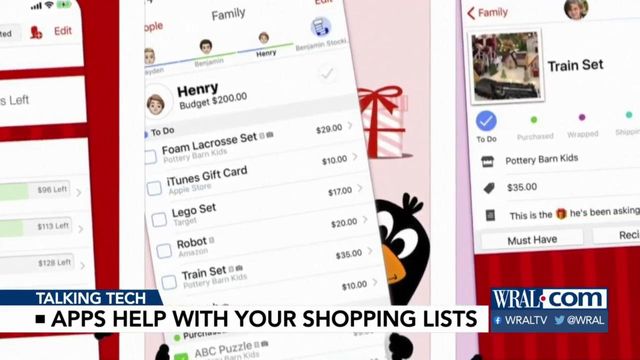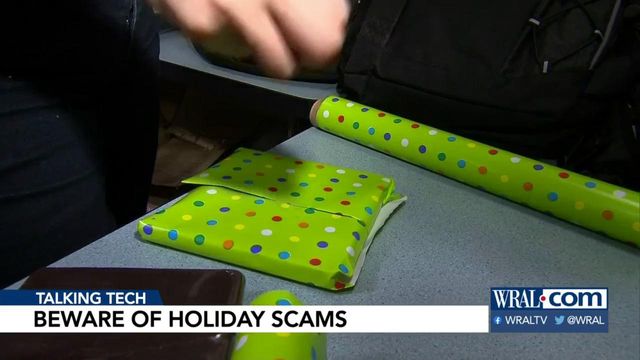Fake websites that look like legitimate online shopping sites have popped up across the web this December. Often, these websites create authentic-looking Facebook pages, then purchase sponsored posts and ads that show up in users' Facebook feeds. Many people in Raleigh have already lost money, purchasing Christmas presents that will never arrive.
Bob Leah, a retired web developer for IBM, said, "The scary thing about these fake websites is that they look completely real on the surface. Scam developers can build a realistic-looking website very quickly, which means they can create dozens or hundreds of fake sites with accompanying Facebook pages, and advertise them across the internet."
These sites offer highly desirable holiday gifts with prices that often seem too good to be true. With viral ads showcasing adorable or amazing holiday gifts, they lure people in, making them think they've just found the holiday-shopping jackpot.
But there is good news. It is possible for consumers to defend themselves against these risky sites by learning how to recognize signs that a website is not what it seems.
Tell-tale signs of a scam holiday shopping website
1. Facebook page was just created: If the Facebook page was just created in November or December and has a very small following, but is already pumping hundreds or thousands of dollars into Facebook ads for holiday shopping, this is a possible indication that the page was created just before the holidays for the purpose of luring customers.
Official brand pages are well-established with large followings, active engagement and good reviews.
2. No social media: To appear legitimate, fake websites often have social media icons in their menu, sidebar or footer. However, when a customer clicks on the icons, they're taken to a dead URL.
3. Dead links: Apart from the social media icons, many of the other links will also go to dead pages. To stay safe, users should take a moment to click on several links or menu items on the website. For example, try to click on the "Newsletter" menu item to opt-in. Does it go to a real newsletter or a dead link? Many fake sites will throw up a few menu items to try and appear normal to casual viewers, hoping users will simply buy the product before noticing most of the site is fake.
4. Check the contact info: Most sites offer a phone number and email address, but fakers bet on the fact that a customer will not need to contact them before ordering a product. Take a moment to dial the phone number or email the contact before you buy. On a fake site, the email may bounce back, and the phone number will not go through. Cautious users can also do a Google search of the phone number or email; sometimes Google will tell you whether or not it's fake.
5. Items are too good to be true: Fake websites specialize in selling highly desirable items, so customers click to purchase before even investigating the site. For example, a site may offer a popular toy that hasn't yet been released anywhere else. These sites also offer amazing sales, offering deals like 70% off. The site may also add a sense of urgency, warning customers there are only a few items left in stock, in the hopes the guest will make an impulsive purchase. To stay safe, always do a Google search for the item in question. If large retailers like Amazon.com, Best Buy or Barnes & Noble don't yet carry the item, or carry it for a much different price-point, you may have found a fake site.
6. Images are fake: Especially if a hot holiday item has not yet been released to major retailers, customers may wonder how a fake site obtained a photo of a specific product or toy. If the site is fake, a simple reverse image search on Google will reveal that their images have been stolen, often from a small artist selling handmade products from their personal website. This step helps reveal the con, and also allows a customer to find the real source of the product they'd like to purchase.
7. Reviews: Always look at the reviews, especially when dealing with a new seller. Fake sites either have no reviews or a dichotomy of extremely positive reviews followed by extremely negative ones. This lack of a middle ground indicates that the developers themselves created fake profiles to leave fake 5-star reviews; then real customers began getting swindled and leaving 1-star reviews, often complaining about "items not received" or "extra charges on their credit card."
Stay safe from scam shopping websites this holiday
One good rule of thumb is to only purchase products from large, reputable retailers, which offer customer protection. However, if the perfect holiday gift pops up in a Facebook ad, take a moment to research the product and website before purchasing.
If a site seems questionable, consumers can take a moment to search for the URL on
RealWebsiteReviews.com. This site helps consumers determine whether or not a website is fake, with the potential danger of stealing their money, or a safe and reputable place to shop.
Online shopping helps many customers have an easier time shopping during the holidays, and it's often a very safe way to purchase Christmas gifts. However, smart consumers can now arm themselves even better by learning how to recognize fake sites.






